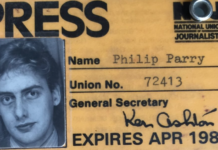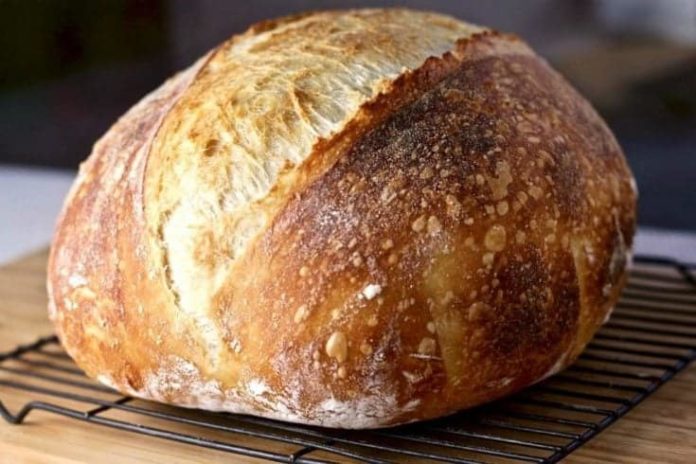A great many people seem to be baking at the moment so here is our recipe for sourdough bread ‘bara surdoes’. Hat tip: John Burton.
Ingredients
- 700 g strong plain organic bread flour
- 100g organic wholemeal flour
- 15g sea salt
- 400ml tepid fresh water
‘Levain’ comprised:
- Sourdough starter
- Plain organic bread flour
- tepid water
Method
The night before baking your bread, make a “levain” by taking your sourdough starter from the fridge and weighing it. Add an equivalent weight each of flour and of water. Mix well to combine. Leave in a bowl overnight for 12-14 hours at room temperature, covered with a clean tea towel or cling film.
- The following morning your levain should have an active, bubbly appearance. Take 420g of this levain for your bread. Of the rest, some needs to go back in the fridge to be used as your sourdough starter for next time. Any remaining levain can be used to make delicious sourdough pizza bases, muffins, crumpets or biscuits.
- Place this 420g of levain in a bowl with the plain and wholemeal flours, the sea salt and 400ml of tepid water. Bring this mixture together and then knead it, either in a food processor, using a dough hook, or by hand. I use both, starting off with five minutes in the processor and then working the dough by hand, to allow me to get a “feel” for when the dough is ready. To knead by hand, firmly push the dough away from you with the heel of one hand, then fold it back over the top towards you and repeat. Avoid adding too much extra flour during the kneading process as this will make your bread heavy and affect the way it rises in the oven.
- As it is kneaded, the gluten in the flour begins to add structure and bounce to the dough. Developing the structure through kneading is the key to your bread holding its shape later in the baking process. When it is ready, your dough will feel like a slightly deflated ball beneath your palm. If you think your dough is at this stage, try the “windowpane test“: using both hands hold the dough up by one edge and let gravity stretch it. If patches of the dough near the top become translucent without the dough breaking, then it’s ready. If instead the dough begins to tear, it requires more kneading. For me, this is one of the most crucial parts to get right. Don’t worry about “over-kneading” your dough. Your arms will feel like they are about to drop off well before then!
- Gently shape your kneaded dough into a ball, place in a lightly oiled bowl and cover with cling film or a tea towel. Leave the dough for 3 to 4 hours to roughly double in size. The amount of time needed for this stage will depend on the ambient room temperature. On warmer days I put my bowl of dough on a table or bench in the garden to gently speed up this stage of the process.
- When the dough has risen sufficiently, tip it out onto a lightly floured surface. Use the tips of your fingers to push down and shape it into a rough square, pushing out any larger air pockets as you do. Take one corner of the dough square and stretch it outwards, then fold that corner back into the middle. Now take a piece of dough next to this and do the same thing, stretching and folding back into the centre. Continue doing this, working your way several times around the dough, until you can feel it has a lovely strong elasticity.
- Halve the dough and shape each half into a ball. Do this by using the edges of your palms to turn the dough while also gently tucking the edges underneath. Place each ball, smooth side down, into a well-floured proving basket (if you do not have one use a lightly oiled and then well-floured bowl. Constraining the dough in this way will encourage it to expand upwards rather than outwards. Dust the top of the dough well with flour. Cover the proving basket or bowl as before and leave for a further 3 hours or so until the dough has just risen over the edges of the container.
- Preheat your oven to 230°C (450°F, gas mark 8). Place a baking stone or one or two flat metal trays in the oven. This will be very hot by the time the bread goes onto it, encouraging it to rise well in the initial stage of baking. Place an empty deep roasting dish in the bottom of your oven. When the oven has reached the desired temperature, pour a litre of water into the roasting tray at the bottom of the oven. This will create steam, which also helps the bread to rise and form a good crust.
- I use a baking paddle to transfer the bread to the oven, but another flat tray will do a similar job. Place a square of baking parchment onto the paddle or tray, then tip your proving basket upside down onto the parchment and gently ease the bread out. Cut lines into the top of bread, using a sharp knife. This will create deliberate “weak spots” in the bread, so that it will not crack randomly in the oven. Slide the bread, still on the parchment, into the oven. Bake for 30 minutes or until the bread is beautifully brown and crusty, and sounds hollow when tapped. Cool on a wire rack.
Mwynhewch!
THE LOCKDOWN COOK









